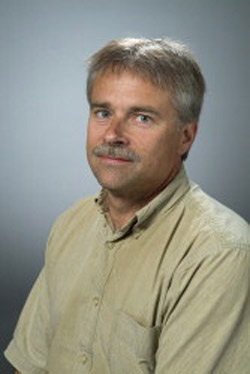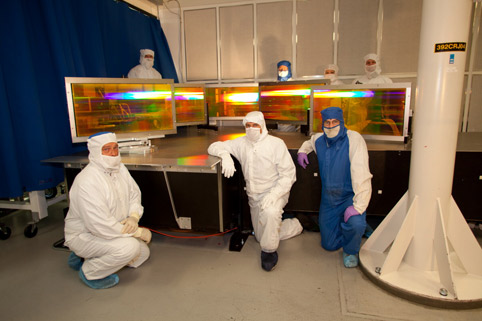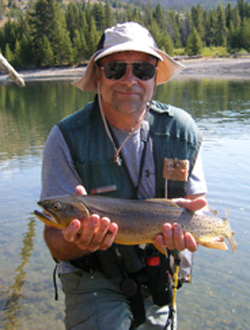Jerry Britten
Gratings Guru

Fortuitously for Jerry Britten, his PhD thesis, “Modeling Combustion Instability in Porous Media,” was a direct fit with a program at LLNL in 1984 looking at underground coal gasification. So upon graduation, he applied only here.
“After the oil crisis of the mid-70s, there was interest in making liquid fuel from coal. However, by the late 80s, the impetus (and the program) went away as gas prices came down,” says Jerry.
“One of the nice things about the Lab is that you can change your career several times and not have to leave the site, and that’s what I did.”
With his background in chemical engineering (BS from Michigan State and PhD from the University of Colorado), he became involved with optical coatings for LLNL's Beamlet laser, which led to work with sol-gel coatings on bigger optics.
“All you needed was knowledge of fluid dynamics, surface etching and cleaning, and chemical engineering,” he says. “When they began to talk about how to coat a precision thin layer of photoresist on larger optics for something called the Nova Petawatt,” says Jerry, “I said, ‘I know how to do that.’”
Currently, Jerry is the program element leader of the Advanced Optical Components and Technology section—specifically, group leader of the Diffractive Optics Group.
“We’ve been manufacturing large aperture diffractive optics since the early 90s, beginning with gratings for the Nova Petawatt laser. At that time, there was no source for making larger than about 16-inch-diameter gratings anywhere in the world. Once we demonstrated the Nova Petawatt, every big institution wanted to have one. So, we went into the Work for Others business, as LLNL was the only source for a long time. It was almost like a small business, and we operated as an independent contractor. It was very appropriate for a national laboratory to do this kind of work as it involved a big investment for a small annual return, it required specialized and expensive equipment, and it served the national interest.”

Originally the gratings were gold over-coated. Then LLNL invented multi-layer dielectric (MLD) gratings, which enabled much more power than gold gratings.
“This was a breakthrough that enabled short-pulse laser systems with greater power and throughput, but the equipment didn’t exist to manufacture these at large aperture,” says Jerry. “Beginning in 2003, a campaign was begun to build the infrastructure to make MLD gratings on a big scale. When we succeeded, once again others wanted these MLD gratings to produce more power with their short-pulse lasers.” Today, Jerry’s group produces gold and multi-layer gratings, as there is still a need for both.
To create the energies needed by NIF, diffractive optics are used to stretch out a broadband laser pulse in time from picoseconds to nanoseconds, which allows amplification of the pulse without damaging the optics.
“If you tried to amplify a seed pulse without stretching, the intensity would be so high, it would break the (glass or crystal) amplifier media,” Jerry explains. When the light bounces off a grating (which diffracts or bends the light), it can be stretched 1,000 times longer, but with lower power, thus maintaining the same amount of energy. It can then be safely amplified, avoiding damage to optics. Once through the amplifiers and optics, compressor gratings are used to collapse the spectrum, producing a much greater intensity that is focused onto the target.

The compressor gratings, which have to be quite large, contain very fine lines on their surface, which diffract the light. The lines are extremely small, .5 microns apart, and must be perfectly straight. If stretched end to end, the total length of the lines on a 1-meter-wide Advanced Radiography Capability (ARC) grating, for example, would equal almost 500 miles.
The group dabbles in other kinds of diffractive optics as well. Currently, they are making Fresnel optics (curved focusing gratings) on extremely thin polymer membranes for a lightweight, large-aperture space telescope application.
One of the best things about his job, Jerry says, is the opportunity to play ultimate Frisbee twice a week at lunchtime with the Lab’s team, the Glowworms, which he’s been doing since 1985.
“You get exercise, it’s competitive but friendly, and it keeps you in shape,” he says. He also plays with other teams in nearby Walnut Creek and Fremont as much as possible. His other pastimes also focus on outdoor activities; they include backpacking, hiking, taking nature photos, and fly fishing, as seen in the photo taken at the Yellowstone river in Wyoming.



